ISSN ONLINE(2319-8753)PRINT(2347-6710)
ISSN ONLINE(2319-8753)PRINT(2347-6710)
D. Premkumar1, M. Balamurugan2
|
| Related article at Pubmed, Scholar Google |
Visit for more related articles at International Journal of Innovative Research in Science, Engineering and Technology
Nowadays, a lot of companies are enlarging their variety of production and this process, as a whole, creates a very competent environment. Capturing a reasonable market share in such an environment requires more than implementing plain production techniques in an effective way. The important step to get ahead in this competition is designing new products in order to create difference and meeting the customer requirements. Meeting customer requirements has also direct relationship with design quality. There are numerous studies on qualitative approaches in industrial design and production issues. Our study mainly focuses on the quality function deployment method to be used in industrial design applications. The main idea of quality function deployment approach is building a design strategy over the voice of the customer.
Keywords |
| Quality Function deployment, Customer requirements, design quality. |
INTRODUCTION |
| The paper is an attempt to introduce the Quality Function Deployment to small scale sectors in Indian Pump Industries and improves the Quality that it involves lots of statistics and immense implementation costs.The paper is in the form of case study illustrating the real-life case where define-measure-analyze-improve-control (DMAIC). |
| Pump manufacturing company is a closely held family owned business that has grown consistently over the years since its inception in 2003. One key to its growth has been its ability to determine the cause of customer pumping problems and solve the problems with custom engineered solutions. We also attribute our success to dedication and experience of our promoters backed by 50 years of family experience in pumps manufacturing line. We are dedicated to provide our customers; the best pump sets for superior performance and high reliability, all at low cost coupled with world class services. It is now an ISO 9001:2008 certified company. |
| Today, it is one of the premier Indian manufacturers of Pumps and Right Angle Gear Drives. Right from the beginning, emphasis was on producing high quality pumps. With this in view, the team of engineers established foolproof quality systems to ensure that the final production is of top quality. In a nutshell, what has brought the company success after success is the timetested golden principle of quality and the vast experience in the field of manufacturing of pumps. |
| We pride in our full range of making pump products. We have been catering to the needs of simple domestic to complex industrial needs. Our product portfolio includes: |
| • Vertical Turbine Pump up to 300HP |
| • Right Angle Gear Drives up to 600HP |
| • Bore well & Open well Submersible Pump set 65HP |
| • Chemical Process Pump up to 150HP |
| • Non-Clog Paper Stock & Sewage Pump up to 100HP |
| • Boiler Feed Pump up to 25HP |
| • Sea-Water Pump up to 300HP |
LITERATURE REVIEW |
| Eshan S. Jaiswal [1] reviewed the quality function deployment in order to understand how it works, to highlight its strengths and weaknesses and to discuss its practical applications. QFD will be defined and explained by means of an example and a number of benefits and implementation problems will be revealed Adjust the template as described below. M. Zarei , M.B. Fakhrzad , M. Jamali Paghaleh [2] pointed out that Quality Function Deployment (QFD) is used to identify viable LEs to be practically implemented in order to increase the leanness of the food chain.Chee-Cheng [3] says that integrating quality function deployment (QFD), management techniques to optimise product-design investment, process improvement, and phase-into meet customer requirements and company goals. P. L. Rika Fatimah, A. A. Jemain,K. Ibrahim, S. Mohammad Nasir, M. A. Khairul Anuar [4] says that quality function deployment is a new perspective for organization to provide priority importance for their members with respect to family. Irem Dikmen, M. Talat Birgonul, Semiha Kiziltas [5] made an attempt to examine the applicability of QFD as a strategic decision-making tool after the construction stage of a housing project to determine the best marketing strategy, to make a comparison between the performances of different competitors and to transfer the experience gained from the current project to the forthcoming projects. Lai-Kow Chan, Ming-Lu Wu [6] reviewed the quality function deployment based on a reference bank of about 650 QFD publications established through searching various sources. Cor P.M. Govers [7] pointed out the use of Implementing QFD to understanding of the philosophy a behind the tool.Antony Lowe, Keith Ridgway, Helen Atkinson [8] pointed out the semi-solid metal processing technology of thixoforming, the relevant quality function deployment techniques and the approach used to develop the tool. R.Radharaman and Leoni d. go doy [9] pointed out that quality function deployment is used to identify the voice of the customer and satisfy their needs. I.Erikkson and F Mcfadden [10] reviewed that quality function deployment is software tool to improve quality. Dr. Arash Shahin [11] reviewed the customer focused quality engineering technique called “Quality Function Deployment (QFD)”. B.M. Moores [12] says the study of the potential for applying the Quality Function Deployment (QFD) method to the analysis of the framework for safety management contained in the Ionising Radiation (Medical Exposure) Regulations (IRMER) of 2000. |
PROBLEM DEFINITION |
| Methodology of Quality Function Deployment has been introduced at one of the small scale units to attack their problem of failing to meet customer delivery commitments. |
METHODOLOGY |
| These problems can be solved by quality function deployment concepts. The approach basis explained in the following fig.1 |
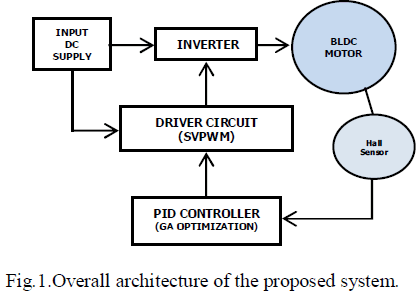 |
| Fig. 1 Flowchart of systematic approach |
COMPAN Y DETAILS |
| The company obtained ISI certificate in the year 1987 under which 64 models of pumps in different series are approved for ISI Marking. Our products are manufactured in Bilimora, possessing all the advanced facilities to create the best quality water pumps for industrial, domestic and agricultural needs. We give a lot of emphasis on R&D facilities which has kept us on the leading edge of pump related technology. We are always on the lookout to introduce innovative and efficient products designed to meet the vital needs of people and industries around the globe. |
| The factory is fully equipped with modern machinery, best of testing facilities and experienced and skillful workers fully supported by design and R&D Engineers. The R&D Division strives to make continuous improvement in the design and quality of KK pumps from time to time. We are well equipped to handle component manufacturing as per International Standards. Moulding and die making at our production center is carried out by using both conventional methods as well as machines (Fully Automatic and Semi Automatic). Special care is taken by our experienced staff to ensure that all the manufacturing parameters and mechanisms are maintained in order to get the right and to the scale component for the perfect functioning of the Pump. We use latest casting technology like shell moulding and investment casting process apart from sand and gravity casting technology to produce quality components for ultimate high quality finish and efficient pumps. We consider our manpower, the greatest asset of ours. We have strong manpower in administration - skilled craftsmen and skilled workers, numbering around 30, to carry out all the functions used in producing a Pump from design drafting to assembling pumps to finishing processing and finally dispatching. |
QUALITY FUNCT ION DEPLOYMENT |
| Quality function deployment (QFD) is a “method to transform user demands into design quality, to deploy the functions forming quality, and to deploy methods for achieving the design quality into subsystems in this methodology, literature review pointed out to create the difference in designing the new products and meet the customer requirements. Meeting customer requirements has also had the direct relationship with the design quality. Customer requirements are carefully studied and defined. It is designed to help planners focus on characteristics of a new or existing product or service from the viewpoints of market segments, company, or technology-development needs. Presently customers of these industries are not properly satisfied and their needs are not properly in taken. The purpose of this study is to pre analyzed the customer requirements. These requirements can be collected from the customer requirements and questionnaire. To pre analyzing customer requirements, house of quality matrix is drawn. These step by step processes are explained below. |
| A. Customer R equirements |
| This section documents a structured list of a product’s customer requirements described in their own word (The Voice of the Customer). The customer requirements refer to the key needs. These requirements are calculated as summing up each requirement and dividing this value by total rating value (the lower the final value, the more important the requirement is like 9-3-1). These requirements can be collected from the industry. The collection of sample voice of the customer form as shown in the following TABLE I. |
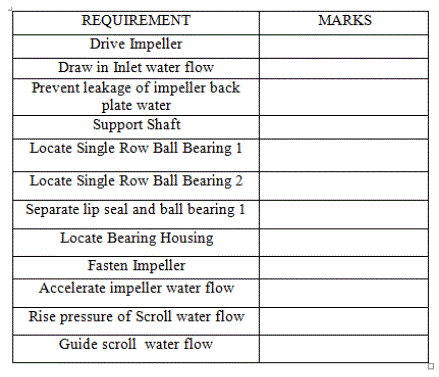 |
| TABLE I. SAMPLE VOICE OF THE CUSTOMER FORM |
| B. Relationship Matrix |
| This section for the main body of the house of quality matrix. The idea is translating the requirements expressed by customer into the technical characteristics of the product. The structure is a two-dimensional matrix with cells that relate the combinations of individual customer and technical requirements. The interrelationship between customer requirements and technical requirements is weighted usually on a four point scale (9 represents strong, 3 represents medium, 1 represents low, and 0 or blank represents none). Technical Priority is calculated for each requirement. |
| Each rating is multiplied by the customer weight and summed across all customer requirements to become the raw score. This value is normalized by dividing each raw score by the sum of all the raw scores for the relative weight. The relative weight shows the amount of customer value attributed to each objective design requirement. |
| C. Customer Perception Assessment |
| In these sections, we studied the competitive products to determine how they rate on the customer and technical metrics. This involves customer perception testing and technical benchmarking. The competitive products (A and B) are tested to determine how they rate on the customer requirements. This matrix can be drawn by collecting competitor benchmarking from the industry. |
| D. Targets |
| This section is typically made up from three parts; technical requirements, competitive benchmarks and targets. Technical requirements part is the relative importance each technical requirement of the product in meeting the customer’s specified needs. It can be calculated from the weightings contained in the planning and interrelationships matrix sections. Each interrelationships weighting is multiplied by the overall weighting from the planning matrix. These values are then summed down the columns to give a priority score for each technical requirement.(A: Competitor Product 1, B: Competitor Product 2).Competitive Benchmarking describes each of the technical requirements that have been identified as important characteristics of the existing competitor products.These can be drawn in the matrix form. Matrix can be drawn by collecting technical targets from the industry. The collection of sample benchmarking as shown in TABLE II. |
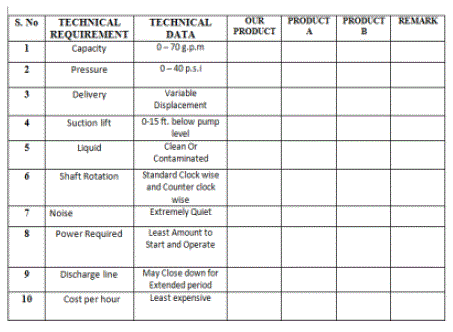 |
| TABLE II. SAMPLE BENCHMARKING FORM |
| E. Overall House of Quality |
| By merging all these requirements, house of quality matrix diagram is formed as shown in Fig. 2, |
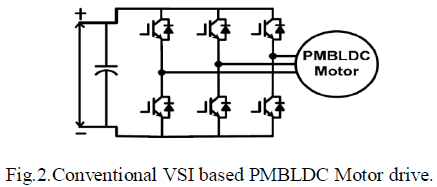 |
| Fig. 2. House of quality |
| F. Advancing phase2 for external design |
| Completing the initial phase of the case study, the second phase is iterating the house of quality matrix one more time to define the external design requirements for corresponding technical requirements. Further all the customer requirements, technical descriptors which is of very high, low and less important factor are considered,collected and defined in the matrix diagram.The relationship matrix of second phase is depicted in Fig. 3, |
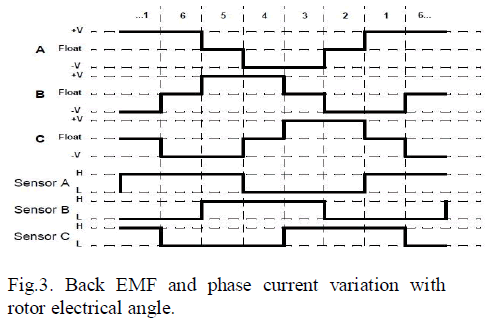 |
| Fig. 3. Matrix diagram for external product design |
| Technical Priority is calculated for each requirement. Each rating is multiplied by the customer weight and summed across all customer requirements to become the raw score. This value is normalized by dividing each raw score by the sum of all the raw scores for the relative weight. The relative weight shows the amount of customer value attributed to each objective design requirement. |
RESULT AND DISCUSSIONS |
| As a result; of course every customer requirement is important on its own, however, as depicted in Fig. 2, “drive Impeller” and “prevent Leakage” properties have the highest overall weighting factors which are 9. Fig. 3 shows the absolute technical priorities that the studies should be focused on. It can be seen that “Water flow rate” and “Pump Body” are the most important ones and also denotes the competitor conditions and target values on the same properties where our new product should not stand back from their competitors and possess the desired specifications in order to capture market. As shown in Fig. 2 and Fig. 3, the technical requirements are evaluated by their corresponding external design requirements. It has been defined that the design of the impeller is the most important external design parameter on the overall project. The design of the body is second important parameter with respect to technical requirement analysis. |
| It is interesting to emphasis that the primary technical priorities (Pump pressure and water flow rate) that have been rated due to the voice of customer had a significant effect on external design parameters. Even though the design of the body is expected to achieve the highest overall percentage on external design, the design of the pump appeared to be the most important factor due to its relationship with primary technical priorities. |
CONCLUSION |
| The design of the drive impeller, the design of the external body and the design of the cabling mechanism consecutively achieved their priorities as external design parameters. It is obvious from Fig. 3 that the choice of coloring to be used as an external design parameter had no direct interrelationship with technical priorities. This also means that it gives the evaluators an idea that a separate study (survey, interview, etc.) can be implemented to decide on the manufacturing of new product. By designing the products based on the identified customer requirements, customer will get satisfied. |
References |
|